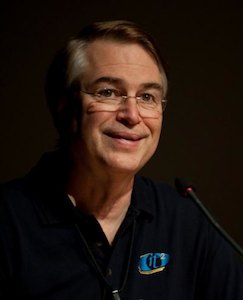
Dr. Larry Smarr
In this slidecast, Larry Smarr from Calit2 presents: Using Supercomputers and Data Science to Reveal your Inner Microbiome.
“The human body is host to 100 trillion microorganisms, ten times the number of cells in the human body and these microbes contain 300 times the number of DNA genes that our human DNA does. The microbial component of our “superorganism” is comprised of hundreds of species with immense biodiversity. Thanks to the National Institutes of Health’s Human Microbiome Program researchers have been discovering the states of the human microbiome in health and disease. To put a more personal face on the “patient of the future,” I have been collecting massive amounts of data from my own body over the last ten years, which reveals detailed examples of the episodic evolution of this coupled immune-microbial system. An elaborate software pipeline, running on high performance computers, reveals the details of the microbial ecology and its genetic components. A variety of data science techniques are used to pull biomedical insights from this large data set. We can look forward to revolutionary changes in medical practice over the next decade.”
Larry Smarr is the founding Director of the California Institute for Telecommunications and Information Technology (Calit2), a UC San Diego/UC Irvine partnership, and holds the Harry E. Gruber professorship in the Department of Computer Science and Engineering (CSE) of UCSD’s Jacobs School of Engineering. Before that he was the founding director of the National Center for Supercomputing Applications (NCSA) at the University of Illinois at Champaign-Urbana. He is a member of the National Academy of Engineering, as well as a Fellow of the American Physical Society and the American Academy of Arts and Sciences. In 2006 he received the IEEE Computer Society Tsutomu Kanai Award for his lifetime achievements in distributed computing systems and in 2014 the Golden Goose Award. He served on the NASA Advisory Council to 4 NASA Administrators, was chair of the NASA Information Technology Infrastructure Committee and the NSF Advisory Committee on Cyberinfrastructure, a member of the DOE Advanced Scientific Computing Advisory Committee and ESnet Policy Board, and for 8 years he was a member of the NIH Advisory Committee to the NIH Director, serving 3 directors. His personal interests include growing orchids, snorkeling coral reefs, and quantifying the state of his body.



